Tech
Custom CD Stickers: Add a Unique Flair to Your Discs
Published
4 months agoon
By
Andrew
what Are Custom CD Stickers?
Custom CD stickers are adhesive labels that fit perfectly on CDs and DVDs. They offer a personalized touch by allowing you to print custom designs, logos, or text.
These stickers can transform an ordinary disc into a professional-looking, branded, or uniquely personalized item. They are commonly used for marketing, personal projects, and special events to give discs a polished and cohesive look.
Types of Materials and Finishes Used
Custom CD stickers are made from various materials, offering different qualities and finishes. Here’s a breakdown of the main components and materials used in these stickers:
- Base Paper: The base paper is the primary layer of the sticker, providing the structure and support. It is typically made from high-quality, durable paper that can withstand handling and application. This layer is often coated to enhance the adhesive’s grip and ensure a smooth application.
- Adhesive Layer: This layer ensures the sticker sticks securely to the CD surface. The adhesive is typically pressure-sensitive, allowing easy application and removal without leaving residue. The adhesive is designed to be strong enough to hold the sticker in place but gentle enough to avoid damaging the CD or leaving marks.
- Primary Materials: The main materials used in custom CD stickers include paper or vinyl. Paper stickers offer a classic look and are suitable for indoor use, while vinyl stickers are more durable and resistant to wear and tear. Vinyl stickers are ideal for CDs that will be handled frequently or used in harsh conditions.
- Printing: Printing is a critical component of custom CD stickers, as it determines the visual quality and clarity of the design. High-resolution printing techniques ensure that colors are vibrant and details are sharp. Standard printing methods include digital and offset printing, which provide excellent results for custom designs.
- Membrane: The membrane is a protective layer applied over the printed design to safeguard it from scratches, moisture, and fading. This layer ensures that the sticker remains pristine, even with regular use. It also enhances the overall appearance by adding a glossy or matte finish, depending on the desired effect.
How To Apply Custom CD Stickers
Applying custom CD stickers is straightforward, but careful handling ensures a smooth and professional finish. Follow these steps to use your stickers effectively:
- Prepare the CD Surface: Before applying the sticker, clean the CD surface thoroughly to remove any dust, dirt, or oil. A clean surface ensures better adhesion and prevents bubbles from forming under the sticker.
- Align the Sticker: Carefully position the sticker over the CD, aligning it with the center. Handle the sticker by the edges to avoid touching the adhesive side.
- Apply the Sticker: Gently place the sticker onto the CD, starting from the center and working outwards. This method helps to avoid air bubbles and ensures a smooth application.
- Smooth Out Bubbles: Use a soft cloth or a credit card to smooth out any air bubbles or wrinkles. Press from the center outward to ensure the sticker adheres evenly and securely.
- Let It Set: Allow the sticker to set for a few hours before handling the CD to ensure the adhesive bonds properly. Avoid exposing the CD to moisture or extreme temperatures during this time.
Conclusion
Custom CD stickers are an excellent way to add a unique flair to your discs, making them stand out with personalized designs and professional finishes. Whether you’re using them for branding, personal projects, or special events, these stickers offer a blend of style and functionality that can enhance any CD or DVD.
You may like
Tech
From Fundamentals to Advanced Skills: Navigating AZ-900 and AZ-204 Certifications
Published
2 months agoon
September 30, 2024
With the major hype around the cloud computing market, Microsoft Azure is definitely a key player in the industry. You can start your journey in the field of Microsoft Azure by passing the AZ-900 exam. It gauges your knowledge of Microsoft Azure fundamentals and other cloud computing principles. This will help equip them for future success in pursuing a higher-level Azure certification.
This certification provides an all-inclusive environment, making it appropriate for even people with non-technical backgrounds. Scroll through this informative guide to learn more about the Azure Fundamentals exam.
Basics of AZ-900 exam
When taking the AZ-900 exam, you will be required to demonstrate your understanding of Microsoft Azure. The AZ-900 exam only tests your fundamental knowledge of the Azure platform. But no candidate without a solid understanding of Azure operations from the grassroot level will be able to pass this exam.
Once you score the required marks and pass the AZ-900 exam, you will be able to obtain other role-based certifications. All these certifications will help you prove your skills and knowledge about Microsoft Azure and related cloud concepts. This certification will also help candidates trying to start their career in Microsoft Azure.
Furthermore, achieving the AZ-900 certification can help you move from Associate to Expert level. With thorough preparation for this Azure certification path, one can acquire practical skills that can be applied to real-life cloud situations.
Syllabus and Format of AZ-900 Exam
The syllabus for the Microsoft AZ-900 exam mainly focuses on foundational concepts of cloud-based services concerning Azure. It includes core Azure services like computing, storage, and networking. This also covers security and privacy services, the Azure support model, and pricing.
You will generally come across 40-60 questions, many of which are in multiple-choice answer format. The duration to complete the Microsoft AZ-900 exam is 1 hour. Candidates need to obtain a minimum of 70% to pass this exam.
Domains of the Microsoft Azure 900 Exam
The different domains included within the Microsoft AZ-900 exam are:
Description of Cloud Concepts
- Understanding different cloud models, including hybrid, private, and cloud, is necessary for passing the exam. With a hybrid cloud model, you will be able to enjoy the benefits of private as well as on-premise cloud systems.
- You must be familiar with different cloud categories like IaaS and PaaS.
- Passing this exam also requires understanding the agility and scalability of Microsoft Azure.
Description of Core Azure Services
- This section will guide you through preparing the fundamental building blocks of the Azure certification path, including regions, availability zones, and more.
- With availability in over 60 regions worldwide, Azure offers a vast selection of services to meet your needs.
- As new regions and data centers are constantly added, Azure provides reliable and scalable solutions to support your business growth.
- Each Azure region comprises multiple data centers, known as availability zones, ensuring maximum availability and performance.
- Furthermore, Azure provides a wide range of computing services, such as App Services, Virtual Machines, Containers, and Kubernetes, to power your applications.
- Azure also offers various storage services, including Blob, Queue, Table, Disk Storage, File Storage, and Database (SQL/NoSQL) storage, such as Azure SQL Server and MySQL Database.
- Azure offers a range of networking services, such as virtual networks and firewalls, that are integral to the platform. These services are often the focus of exam questions. A
- Additionally, Azure boasts a robust catalog of serverless offerings, such as function apps and event grids. They align with cutting-edge technologies like the Internet of Things (IoT) and big data analytics.
- Azure also provides handy tools like PowerShell, Cloud Shell, Azure CLI, and Azure Advisor to streamline resource management.
Description of Privacy, Security, Compliance, and Trust
- In the Azure Fundamentals exam, a strong security foundation is vital for effectively managing network traffic and ensuring the safety of resources. This includes utilizing essential elements such as Network Security Groups (NSG) and Azure Security Center. With these building blocks, you can efficiently organize and secure network activity.
- To further strengthen security, access management for all Azure resources can be easily managed through role-based access control (RBAC) and multi-factor authentication (MFA).
- In addition, Azure’s monitoring capabilities and service health features provide a valuable advantage in identifying and resolving potential issues with your applications, providing proactive solutions within seconds.
- To achieve compliance within your organization, it’s pivotal to possess a solid understanding of Azure services such as Trust Center and data security.
- By familiarizing yourself with these resources, you can effectively work towards meeting your organization’s compliance goals.
Description of Azure Pricing Service Level Agreements and Lifecycles
- In this section of the Azure Fundamentals exam, we will cover various topics related to Azure cost management, including zone-based billing and the Azure Cost Analysis tool.
- With this analysis tool, you can easily track and analyze the costs of your organization’s use of different Azure services.
- Azure also offers pay-as-you-go and reserved instance pricing models, with unique pricing units for each service.
- It is also crucial to familiarize yourself with the services available in the free Azure account, the various options for purchasing Azure products and services, and the service level agreements (SLA).
- Finally, understanding the lifecycle of features, preview features, and monitoring features is essential for optimal usage of Azure.
Microsoft Azure Certification Az-204 eligibility
The Microsoft Azure certification Az-204 is ideal for candidates entering the cloud industry. Fresh graduates planning to enter the job market can pursue the Microsoft Azure Az-204 course.
This Azure certification will also be perfect for candidates with less than two years of experience. Remember that you don’t need a technical background to pursue this Microsoft Azure certification. With the Microsoft Az-204 certification, even individuals with a non-technical background can shift to the world of the cloud.
The Microsoft Azure certification Az-204 is your baseline for becoming an Azure Developer Associate.
The key situations to pursue this certification include:
You have coding knowledge but lack Azure experience
If you have spent over a year mastering C# and .NET but lack experience with Azure, obtaining the Microsoft AZ-204 certification would be a sensible choice. This certification will deliver you a deep understanding of the Azure platform. So you will be able to optimize your coding techniques and effectively manage and maintain your creations.
It is important to note that the focus here is on your current programming knowledge, as the exam will not help you acquire coding skills from the ground up. Instead, the Microsoft Azure certification Az-204 is designed for developers seeking to excel in creating Azure solutions.
You want to shift from Scripting to Programming
Microsoft AZ-204 can lead to success even without prior programming experience. As someone with scripting knowledge, you may need additional programming skills. With dedication and ample time, mastering the fundamental coding skills necessary to pass the Azure exam is achievable. While it may prove challenging, there is no harm in immersing oneself in programming right away.
Topics under Microsoft Azure Az-204
Securing the highly coveted AZ-204 certification from Microsoft is no easy feat. A successful attempt requires thorough preparation and prior training. This comprehensive Microsoft Azure certification training covers many essential concepts, each with varying levels of importance.
Luckily, the course has been thoughtfully broken down into manageable modules and domains, allowing for a more effective study approach. Careful attention must be paid to each domain to pinpoint areas requiring additional preparation and focus.
The four distinct domains are:
- Developing Azure Computing Solutions
- Azure Storage-related Development
- Implementing Azure Security
- Azure Solution Optimization, Monitoring, and Troubleshooting
Wrapping up
Mastering the AZ-900 and AZ-204 certifications provides a solid foundation and advanced skills in Microsoft Azure, empowering professionals to navigate cloud technologies confidently. While AZ-900 equips you with essential cloud concepts and Azure services, AZ-204 takes you deeper into the development and management of cloud solutions. Together, these certifications enhance your technical proficiency and open doors to diverse career opportunities in the ever-growing cloud industry. By pursuing both, you build a comprehensive skill set to help you thrive in Azure.
Tech
Pichuneter: A Deep Dive into the Emerging Phenomenon
Published
2 months agoon
September 22, 2024
Origins of Pichuneter
To understand Pichuneter, it is essential to trace its origins. The term appears to be a blend of “pichu,” a playful term suggesting something small or cute, and “neter,” which could derive from “network” or “internet.” This fusion suggests a concept that intertwines the digital world with elements of playfulness or novelty.
The Linguistic Roots
The linguistic roots of Pichuneter highlight the evolution of language in the digital age. As new technologies and platforms emerge, language adapts to describe these innovations. Pichuneter is a prime example of this evolution, reflecting the dynamic interplay between language and technology.
The Technological Aspect
In the realm of technology, Pichuneter is associated with several emerging trends and innovations. From software development to digital art, Pichuneter is influencing various technological domains.
Software Development
In software development, Pichuneter refers to a new programming paradigm that emphasizes simplicity and efficiency. Developers using the Pichuneter approach focus on creating lightweight, adaptable applications that prioritize user experience. This method contrasts with traditional software development models, which often prioritize functionality over user-friendliness.
Key Features
- Simplicity: Pichuneter encourages developers to streamline their code, eliminating unnecessary complexity. This simplicity enhances the user experience and reduces the likelihood of bugs and errors.
- Adaptability: Pichuneter applications are designed to adapt to different devices and platforms seamlessly. This adaptability is crucial in a world where users access content on various devices, from smartphones to tablets and desktop computers.
- User-Centric Design: The Pichuneter approach prioritizes user feedback, incorporating it into the development process to ensure that applications meet users’ needs and expectations.
Digital Art
Pichuneter also has a significant impact on digital art. Artists and designers are using Pichuneter techniques to create visually stunning works that push the boundaries of creativity.
Key Elements
- Minimalism: Pichuneter art often embraces minimalism, focusing on clean lines and simple shapes. This minimalist approach allows artists to convey powerful messages with minimal visual clutter.
- Interactivity: Pichuneter digital art frequently incorporates interactive elements, inviting viewers to engage with the artwork on a deeper level. This interactivity creates a dynamic experience, blurring the line between artist and audience.
- Innovation: Artists using the Pichuneter approach are at the forefront of innovation, experimenting with new tools and techniques to create groundbreaking works. This spirit of innovation drives the evolution of digital art.
The Cultural Impact
Beyond technology, Pichuneter is also influencing culture and society. From social media to fashion, the Pichuneter phenomenon is shaping the way people interact and express themselves.
Social Media
In the realm of social media, Pichuneter is synonymous with creativity and authenticity. Users are embracing Pichuneter techniques to create unique and engaging content that stands out in a crowded digital landscape.
Key Trends
- Visual Storytelling: Pichuneter encourages users to tell stories through visuals, using images and videos to convey messages and emotions. This trend is evident on platforms like Instagram and TikTok, where visual content reigns supreme.
- Authenticity: In an era of curated personas, Pichuneter emphasizes authenticity and genuine expression. Users are encouraged to share their true selves, fostering a sense of community and connection.
- Micro-Influencers: Pichuneter has given rise to a new breed of influencers who focus on niche audiences and authentic engagement. These micro-influencers leverage their unique perspectives to build loyal followings.
Fashion
Pichuneter is also making waves in the fashion industry, where designers are embracing its principles to create innovative and sustainable clothing.
Key Concepts
- Sustainability: Pichuneter fashion prioritizes sustainability, using eco-friendly materials and production methods. This focus on sustainability aligns with growing consumer demand for ethical and environmentally conscious fashion.
- Individuality: Pichuneter fashion celebrates individuality and self-expression. Designers are creating pieces that allow wearers to showcase their unique styles and personalities.
- Tech Integration: The integration of technology into fashion is a hallmark of Pichuneter. From smart fabrics to wearable tech, designers are exploring new ways to enhance the functionality and aesthetics of clothing.
The Future of Pichuneter
As Pichuneter continues to evolve, its impact on technology, culture, and society is likely to grow. Several trends and developments suggest a bright future for this emerging phenomenon.
Potential Developments
- Cross-Disciplinary Collaboration: Pichuneter is fostering collaboration between different fields, from technology and art to fashion and design. This cross-disciplinary approach is driving innovation and creativity.
- Global Reach: As the internet continues to connect people worldwide, Pichuneter has the potential to reach a global audience. This global reach could facilitate cultural exchange and understanding, breaking down geographical and cultural barriers.
- Empowerment: Pichuneter empowers individuals to express themselves and pursue their passions. By emphasizing creativity and authenticity, Pichuneter encourages people to embrace their uniqueness and share it with the world.
Challenges and Considerations
While the potential of Pichuneter is vast, several challenges and considerations must be addressed to ensure its positive impact on society.
Key Challenges
- Digital Divide: Access to technology and the internet remains a barrier for many people worldwide. To fully realize the potential of Pichuneter, efforts must be made to bridge the digital divide and ensure equal access to digital resources.
- Privacy and Security: As Pichuneter encourages sharing and interaction online, privacy and security concerns become increasingly important. Protecting users’ personal information and data is crucial to maintaining trust and fostering a safe online environment.
- Ethical Considerations: The rapid pace of technological advancement raises ethical questions about the use and impact of new technologies. As Pichuneter continues to evolve, it is essential to consider the ethical implications of its applications.
Conclusion
Pichuneter represents a fascinating intersection of technology, culture, and creativity. As it continues to gain traction, Pichuneter has the potential to reshape various aspects of society, from software development to digital art and social media. By embracing simplicity, authenticity, and innovation, Pichuneter is paving the way for a more connected and expressive future. However, addressing the challenges and considerations associated with this phenomenon is crucial to ensuring its positive impact on the world.

Introduction to Gauges
Definition and Purpose
A gauge is a device used to measure the magnitude, amount, or contents of something, typically displayed as a figure or quantity. Gauges can be mechanical, electronic, or a combination of both, and they are used in a variety of fields, including automotive, industrial, aviation, and domestic applications.
Historical Background
The history of gauges dates back to ancient times when simple devices like sundials were used to measure time. With the advent of the Industrial Revolution, the development of gauges became more sophisticated, with the creation of pressure gauges, thermometers, and speedometers.
Types of Gauges
Gauges can be broadly categorized based on their function and the quantity they measure. Some of the most common types include:
Pressure Gauges
Pressure gauges are used to measure the pressure of gases and liquids. They are essential in various industries, including oil and gas, manufacturing, and HVAC systems. The most common types of pressure gauges are:
- Bourdon Tube Gauges: These gauges use a curved tube that straightens when pressure is applied. The movement of the tube is converted into a dial reading.
- Diaphragm Gauges: These gauges use a diaphragm that flexes under pressure. The movement of the diaphragm is transmitted to a pointer on a dial.
- Digital Pressure Gauges: These use electronic sensors to measure pressure and display the reading on a digital screen.
Temperature Gauges
Temperature gauges measure the heat level in a system or environment. They are crucial for maintaining optimal operating conditions in engines, industrial processes, and climate control systems. Types of temperature gauges include:
- Thermometers: The most common temperature gauge, using liquid expansion, bimetallic strips, or electronic sensors to measure temperature.
- Infrared Temperature Gauges: These gauges measure temperature from a distance by detecting infrared radiation emitted by an object.
Speedometers
Speedometers measure the speed of a vehicle or machine. They are primarily used in automotive applications to ensure compliance with speed limits and maintain safety.
- Analog Speedometers: Use a cable connected to the vehicle’s transmission to measure speed, displaying it on a dial.
- Digital Speedometers: Use electronic sensors to measure speed and display it on a digital screen.
Fuel Gauges
Fuel gauges indicate the level of fuel in a tank. They are essential in vehicles and aircraft to ensure there is enough fuel for a journey.
- Float-Type Fuel Gauges: Use a float connected to a variable resistor to measure the fuel level.
- Capacitive Fuel Gauges: Use the capacitance between electrodes to determine the fuel level.
Level Gauges
Level gauges measure the level of a liquid or solid in a container. They are used in industries such as water treatment, chemical processing, and food and beverage production.
- Sight Glass Level Gauges: Allow visual inspection of the level through a transparent tube.
- Ultrasonic Level Gauges: Use ultrasonic waves to measure the level of a substance without direct contact.
Thickness Gauges
Thickness gauges measure the thickness of materials, such as metal, plastic, or paint coatings. They are used in manufacturing and quality control processes.
- Mechanical Thickness Gauges: Use a calibrated dial or micrometer to measure thickness.
- Ultrasonic Thickness Gauges: Use sound waves to measure the thickness of a material non-destructively.
Applications of Gauges
Gauges are used in a wide range of applications across different industries. Here are some notable examples:
Automotive Industry
In the automotive industry, gauges are essential for monitoring vehicle performance and ensuring safety. Common gauges found in vehicles include:
- Speedometers: Measure vehicle speed.
- Tachometers: Measure engine RPM (revolutions per minute).
- Fuel Gauges: Indicate fuel level.
- Oil Pressure Gauges: Monitor engine oil pressure.
- Temperature Gauges: Monitor engine coolant temperature.
Industrial Applications
In industrial settings, gauges are used to monitor and control processes, ensuring safety and efficiency. Key applications include:
- Pressure Gauges: Monitor pressure in pipelines, reactors, and tanks.
- Temperature Gauges: Maintain optimal operating conditions in machinery and processes.
- Level Gauges: Monitor liquid levels in tanks and silos.
- Flow Gauges: Measure the flow rate of liquids and gases in pipelines.
Aviation
In aviation, gauges are critical for ensuring the safe operation of aircraft. They provide pilots with essential information about the aircraft’s status and performance. Key gauges in aviation include:
- Altimeters: Measure altitude above sea level.
- Airspeed Indicators: Measure the speed of the aircraft relative to the surrounding air.
- Vertical Speed Indicators (VSIs): Measure the rate of climb or descent.
- Fuel Gauges: Monitor fuel levels.
- Engine Gauges: Monitor parameters such as oil pressure, temperature, and RPM.
Domestic Applications
Gauges are also used in everyday domestic settings to monitor and control various systems, including:
- Thermometers: Measure indoor and outdoor temperature.
- Barometers: Measure atmospheric pressure for weather forecasting.
- Water Pressure Gauges: Monitor water pressure in plumbing systems.
- Electricity Meters: Measure electricity consumption.
Technology Behind Gauges
Gauges rely on a variety of technologies to measure and display information accurately. Here are some of the key technologies used in gauges:
Mechanical Gauges
Mechanical gauges use physical mechanisms to measure and display quantities. They are often simple, reliable, and require no external power source. Examples include:
- Bourdon Tubes: Used in pressure gauges to convert pressure into mechanical displacement.
- Bimetallic Strips: Used in thermometers to convert temperature changes into mechanical displacement.
Electronic Gauges
Electronic gauges use sensors and electronic circuits to measure quantities and display readings digitally. They offer higher accuracy and precision compared to mechanical gauges. Key components include:
- Sensors: Convert physical quantities into electrical signals. Examples include pressure sensors, temperature sensors, and accelerometers.
- Microcontrollers: Process sensor data and control the display.
- Digital Displays: Show readings numerically on an LCD or LED screen.
Smart Gauges
Smart gauges integrate advanced technologies such as IoT (Internet of Things) connectivity and data analytics to provide enhanced functionality and real-time monitoring. Benefits of smart gauges include:
- Remote Monitoring: Access gauge readings from anywhere using a smartphone or computer.
- Data Logging: Record and analyze historical data for performance optimization.
- Alerts and Notifications: Receive alerts for abnormal readings or system failures.
Calibration and Maintenance of Gauges
Ensuring the accuracy and reliability of gauges requires regular calibration and maintenance. Here are some best practices:
Calibration
Calibration is the process of comparing a gauge’s readings to a known standard and adjusting it to ensure accuracy. Key steps include:
- Using Calibration Standards: Compare gauge readings to certified reference standards.
- Zero Adjustment: Set the gauge to zero when no quantity is present.
- Span Adjustment: Adjust the gauge to accurately measure across its full range.
Maintenance
Regular maintenance is essential to ensure the longevity and reliability of gauges. Maintenance tasks include:
- Cleaning: Keep gauges free of dust and debris.
- Inspection: Check for physical damage or wear.
- Lubrication: Lubricate moving parts in mechanical gauges to prevent friction and wear.
- Software Updates: Keep electronic gauges updated with the latest firmware.
Future Trends in Gauge Technology
As technology continues to advance, gauges are evolving to meet the demands of modern applications. Here are some emerging trends in gauge technology:
Integration with IoT
The integration of gauges with IoT technology allows for real-time monitoring and control of systems. This enables predictive maintenance, remote diagnostics, and increased operational efficiency.
Advanced Sensor Technology
Advancements in sensor technology are leading to the development of more accurate and reliable gauges. Innovations include:
- MEMS Sensors: Micro-Electro-Mechanical Systems (MEMS) sensors offer high precision in a compact form factor.
- Nanotechnology: Nanomaterials are being used to create sensors with enhanced sensitivity and accuracy.
Wireless Connectivity
Wireless connectivity allows gauges to transmit data without the need for physical connections. This simplifies installation and enables seamless integration with digital systems.
User-Friendly Interfaces
Modern gauges are being designed with user-friendly interfaces that make it easier for operators to interpret and interact with data. Features include touchscreens, customizable displays, and intuitive controls.
Conclusion
Gauges play a vital role in measuring and monitoring various quantities across a wide range of industries and applications. From simple mechanical devices to advanced electronic instruments, gauges provide the accuracy and reliability needed to ensure safety and efficiency. As technology continues to evolve, gauges are becoming more sophisticated, offering enhanced functionality and connectivity. By understanding the different types of gauges, their applications, and the technology behind them, we can appreciate the essential role they play in our daily lives and industries.
Trending
-

 Tech4 months ago
Tech4 months agoExplore Hoptraveler.com: Your Gateway to Unique Travel Experiences
-

 Tech4 months ago
Tech4 months agoExploring Complete Information About “Vy6Ys”
-

 Tech4 months ago
Tech4 months agoVC7774: Cutting-Edge Semiconductor for Superior Performance
-

 Tech4 months ago
Tech4 months agoOverview of Luxury Fintechzoom: A Blend of Wealth and Innovation
-

 News4 months ago
News4 months agoExploring Merchant Cash Advances: A Review of Blursoft Solutions
-

 Business3 months ago
Business3 months agoПревоодач: Zamonaviy O‘zbek Ijodiyoti va Uning Kelajagi
-

 Life style4 months ago
Life style4 months agoThe Concept of Cmhiyet: Embracing the Moroccan Spirit
-

 News4 months ago
News4 months agoExploring Sifangds: A Comprehensive Guide to Understanding Its Significance
